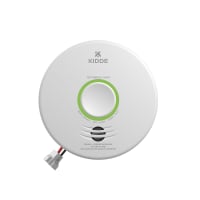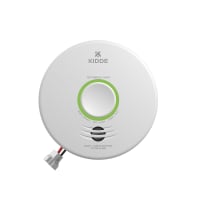What is Carbon Monoxide (CO)?
-
Carbon Monoxide is a colorless, odorless and tasteless poisonous gas that can be fatal when inhaled.
-
It is sometimes called the "silent killer."
-
CO inhibits the blood's capacity to carry oxygen.
-
CO can be produced when burning fuels such as gasoline, propane, natural gas, oil or wood.
-
CO is the product of incomplete combustion. If you have fire, you have CO.
Where does Carbon Monoxide (CO) come from?
-
Any fuel-burning appliance that is malfunctioning or improperly installed.
-
Furnaces, gas range/stove, gas clothes dryer, water heater, portable fuel-burning space heaters, fireplaces, generators and wood burning stoves.
-
Vehicles, generators and other combustion engines running in an attached garage.
-
Blocked chimney or flue.
-
Cracked or loose furnace exchanger.
-
Back drafting and changes in air pressure.
-
Operating a grill in an enclosed space.
What are the symptoms of Carbon Monoxide (CO) poisoning?
-
Initial symptoms are similar to the flu without a fever and can include dizziness, severe headaches, nausea, sleepiness, fatigue/weakness and disorientation/confusion.
What are the effects of Carbon Monoxide (CO) exposure?
-
Common Mild Exposure - Slight headache, nausea, vomiting, fatigue, flu-like symptoms.
-
Common Medium Exposure - Throbbing headache, drowsiness, confusion, fast heart rate.
-
Common Extreme Exposure - Convulsions, unconsciousness, brain damage, heart and lung failure followed by death.
-
If you experience even mild CO poisoning symptoms, immediately consult a physician!
Are there any steps I can take to prevent Carbon Monoxide (CO) poisoning?
-
Properly equip your home with carbon monoxide alarms on every level and in sleeping areas. The only safe way to detect CO in your home is with a CO alarm.
-
Every year have the heating system, vents, chimney and flue inspected by a qualified technician.
-
Regularly examine vents and chimneys for improper connections, visible rust and stains.
-
Install and operate appliances according to the manufacturer's instructions.
-
Only purchase appliances that have been approved by a nationally recognized testing laboratory.
-
Never use a gas range/stove to heat the home.
-
Never leave your car idling in a closed garage or use fuel-powered appliances or tools in enclosed, attached areas such as garages or porches. Carbon monoxide can seep into your home through vents and doors.
Do I need a Carbon Monoxide (CO) alarm? Where should it be installed?
-
Every home with at least one fuel-burning appliance/heater, attached garage or fireplace should have a CO alarm.
-
If the home has only one CO alarm, it should be installed in the main bedroom or in the hallway outside of the sleeping area.
-
An alarm should be installed on every level of the home and in sleeping areas.
-
Place the alarm at least 15 feet away from fuel-burning appliances.
-
Make sure nothing is covering or obstructing the unit.
-
Do not place the unit in dead air spaces or next to a window or door.
-
Test the CO alarm once a month by pressing the test/reset button.
-
Every month, unplug the unit and vacuum with a soft-brush attachment or wipe with a clean, dry cloth to remove accumulated dust.
Should my Carbon Monoxide (CO) alarm have a digital display? What does the peak level function do?
-
A digital display allows you to see if CO is present and respond before it becomes a dangerous situation.
-
Peak Level Memory stores the highest recorded reading prior to being reset. This feature enables you to know if there was a reading while you were away from home, and also can help emergency responders determine the best treatment.
Whom should I call if my Carbon Monoxide (CO) alarm goes off?
-
If anyone is experiencing symptoms, you need to get everyone into fresh air and call 911 from a neighbor's home.
-
If no one is experiencing symptoms, you should call the fire department or a qualified technician from a neighbor's home to have the problem inspected.
-
If you are unable to leave the home to call for help, open the doors and windows, and turn off all possible sources while you are waiting for assistance to arrive.
-
Under no circumstance should an alarm be ignored!



